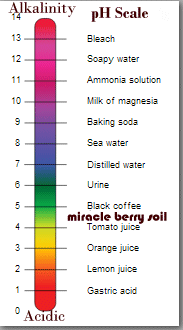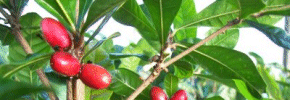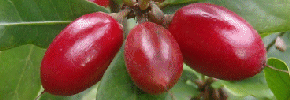Miracle berry trees prefer acidic soil and a pH of approximately 5. Peat moss is a great base. Perlite is another important component in the soil as it helps to keep the soil loose and traps moisture well. Peat moss and perlite should make up most of any miracle fruit soil, approximately 50/50 or slightly more peat moss. Miracle berry doesn’t usually need fertilizers when first planted, in fact, it should be used with caution even after the tree is established.
The acidity of the soil is one of the most important
considerations in keeping a miracle berry tree healthy and
producing fruit. Peat moss adds acidity but can vary in
acidity by a wide margin because commercial peat moss is
typically treated to raise its pH.

If at any point the plant’s leaves start to spot or turn brown on the ends, the pH of the soil should be tested. Miracle fruit plants can die quickly if their soil is not maintained to their liking, but it is completely avoidable if tended to properly.
Pollination
The plants typically begin flowering at a height of about 1.5ft
and begin to fruit when they are about 2 feet tall, which is the
approximate maturity of the 3 gallon plant we sell.
They self pollinate and the process can be aided by gently shaking the tree to help distribute the pollen while they are flowering. This can be especially effective if the plant is located indoors, where natural pollination may be more of a challenge.
Watering
Avoid watering with tap water, use non-chlorinated water or, if
the water is chlorinated, let it stand for 24 hours. The pH of
water from the tap is usually higher than the plant likes and
the chlorine does not help. Rain water is better. Be sure the
plant has good drainage. Miracle berry trees like the soil damp
but they do not like swimming in water. Their roots are
susceptible to rot if left in standing water for an extended
period of time. Excessive dryness will kill or damage the plant.
Do not allow it to dry out.
Humidity is another important consideration. The higher the humidity, the better, but 60-80% is OK.


